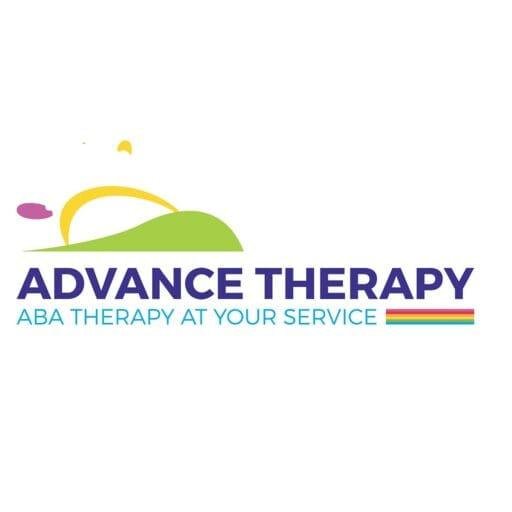
Imagine a child who struggles to communicate, faces overwhelming challenges in social interactions, and exhibits repetitive behaviors that make daily life difficult. Now, envision that same child gradually gaining confidence, developing essential life skills, and experiencing meaningful social connections. This is not a mere fantasy; it is the reality for countless families who have embraced ABA therapy.
Applied Behavior Analysis (ABA) therapy has become a cornerstone in the treatment of autism, offering evidence-based interventions that promote behavioral improvements and overall quality of life. Through personalized approaches, including home autism treatment Canada, ABA therapy has transformed lives, giving hope to children and families around the world. In this article, we explore inspiring ABA therapy success stories and outcomes, shedding light on how this transformative therapy can make a difference.
Understanding ABA Therapy
What is ABA Therapy?
ABA therapy, or Applied Behavior Analysis, is a scientifically validated approach to understanding and improving human behavior. For children with autism spectrum disorder (ASD), ABA therapy focuses on reinforcing positive behaviors and reducing behaviors that may hinder learning or social development.
Core Principles of ABA Therapy
Positive Reinforcement: Rewarding desirable behavior to increase its occurrence.
Task Analysis: Breaking down complex tasks into smaller, manageable steps.
Data-Driven Decisions: Tracking progress meticulously to guide intervention strategies.
Individualized Approach: Tailoring therapy to meet the unique needs of each child.
ABA therapy is highly structured, yet flexible, allowing therapists to adapt techniques to suit the child’s strengths, weaknesses, and interests. This personalized methodology is one of the reasons why ABA therapy yields such significant results.
The Impact of ABA Therapy
Behavioral Improvements
One of the most remarkable aspects of ABA therapy is its measurable impact on behavior. Children participating in ABA programs often show substantial gains in areas such as:
Communication skills
Social interaction
Academic performance
Daily living skills
Case Study: Overcoming Communication Barriers
Consider Emma, a 5-year-old who struggled to express her needs and desires. Through a carefully designed ABA program, Emma learned to use picture exchange communication systems (PECS) and eventually progressed to verbal communication. Within a year, Emma could form sentences, express her emotions, and engage meaningfully with peers. Her parents describe the transformation as “life-changing.”
Home-Based ABA Therapy: Advantages and Success
Benefits of Home Therapy
For families seeking flexible and personalized interventions, home autism treatment Canada has proven highly effective. Delivering therapy in a familiar environment reduces anxiety and allows children to apply new skills in real-life contexts.
Benefits include:
Increased comfort and reduced stress
Consistent learning opportunities
Greater parental involvement
Enhanced generalization of skills to everyday life
Real-Life Success Story
Liam, a 6-year-old diagnosed with ASD, initially struggled in group therapy sessions. His parents opted for home autism treatment Canada, working closely with a certified ABA therapist. Over six months, Liam showed remarkable improvements in self-help skills, including dressing and feeding himself independently. The home setting allowed continuous reinforcement, resulting in faster and more sustainable progress.

Educational and Social Outcomes
Academic Achievements
ABA therapy doesn’t just address behavioral issues; it also supports academic growth. Children receiving ABA interventions often show better attention spans, increased motivation for learning, and improved problem-solving skills.
Social Skills Development
Autism can make social interactions challenging, but ABA therapy systematically teaches social rules, turn-taking, and empathy. By practicing these skills in controlled environments, children can successfully transfer them to school, playgrounds, and community settings.
Success Story: Sophia, an 8-year-old, initially avoided group play. Through ABA-guided social skills training, she learned to initiate conversations, share toys, and understand others’ emotions. Today, Sophia participates actively in class activities and has formed lasting friendships.
Parental Involvement and Training
Role of Parents in ABA Therapy
Parents are integral to ABA therapy’s success. Training parents to implement techniques at home ensures consistency and reinforces learning outside therapy sessions.
Example of Parental Impact
The Johnson family reports that learning ABA strategies allowed them to support their child, Noah, during everyday routines. With guidance from therapists, they could implement reinforcement techniques, prompting Noah to improve his communication, manage frustration, and navigate social situations confidently.
Long-Term Outcomes
Behavioral Maintenance
Children who receive consistent ABA therapy often maintain and generalize positive behaviors into adolescence and adulthood. Skills learned through ABA can lead to greater independence, self-confidence, and social integration.
Academic and Vocational Success
Many children who have benefited from ABA therapy transition successfully to mainstream schools and later pursue higher education or vocational training. Early intervention, particularly through programs like home autism treatment Canada, significantly increases the likelihood of long-term academic and professional achievements.
Overcoming Challenges
Addressing Resistance and Anxiety
Some children may initially resist therapy or exhibit anxiety. Skilled therapists employ gradual exposure techniques, creating positive associations and building trust.
Example
Ethan, a 4-year-old, initially refused structured activities. His therapist incorporated his interests in cars and trains, gradually introducing learning tasks. Over time, Ethan embraced therapy sessions, demonstrating substantial improvement in focus and compliance.
Community and Support Networks
Importance of Community Support
ABA therapy’s success is amplified when supported by inclusive communities, school programs, and advocacy networks. Parents and caregivers benefit from peer support, guidance, and shared experiences.
Case Study
In Toronto, a local ABA support group helped families connect, exchange strategies, and celebrate milestones. Children participating in home autism treatment Canada programs benefited from combined professional and community reinforcement, resulting in enhanced social and academic outcomes.
Measuring Success: Data and Evidence
Tracking Progress
One of ABA therapy’s strengths is its reliance on data. Therapists meticulously document behaviors, skill acquisition, and progress towards individualized goals.
Evidence-Based Outcomes
Research consistently demonstrates that children receiving ABA therapy show significant improvements compared to peers without structured interventions. Longitudinal studies confirm gains in communication, social behavior, and adaptive skills.
Key Statistic: A 2020 study indicated that early ABA intervention increased the likelihood of children achieving mainstream academic placement by 30%, highlighting the tangible benefits of consistent therapy.
Tips for Maximizing ABA Therapy Success
Early Intervention: Starting ABA therapy as early as possible enhances outcomes.
Consistency: Regular, structured sessions create sustained progress.
Parental Engagement: Active participation reinforces skills at home.
Data-Driven Adjustments: Continuous monitoring ensures therapy remains effective.
Collaborative Approach: Integrating therapists, educators, and caregivers creates a supportive ecosystem.
Conclusion
ABA therapy has proven to be a life-changing intervention for children with autism, offering measurable improvements in behavior, communication, social skills, and academic performance. The success stories of Emma, Liam, Sophia, and others illustrate the transformative power of consistent, personalized ABA therapy. Programs like home autism treatment Canada offer families flexibility, comfort, and real-life application, amplifying the benefits of structured interventions.
Parents, caregivers, and educators play an essential role in supporting children through ABA therapy, fostering an environment where skills are learned, reinforced, and generalized across various settings. By embracing early intervention, personalized strategies, and community support, ABA therapy can help children with autism unlock their full potential, gain independence, and thrive socially and academically.
The journey is ongoing, but with evidence-based interventions and dedicated support, countless children continue to achieve remarkable outcomes. ABA therapy is not just a treatment; it is a gateway to growth, connection, and hope for the future.
